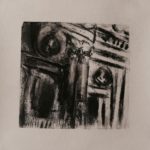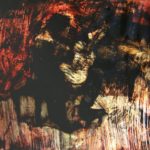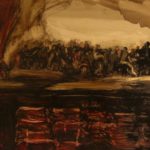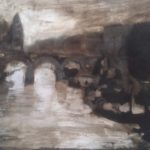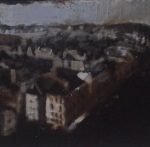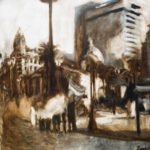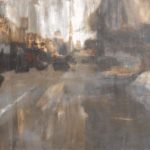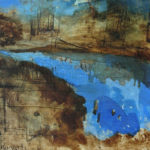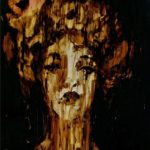
Artist Bio
Interview
Artist: Fernanda Piamonti

When you decided to become an artist?
I don’t remember when it happened. I feel that the process was a continuous art-game. As a young girl, I promised myself not to stop playing.
Six years of school makes us abandon the child’s solitary “game” that stimulates a lot of creativity. But my parents created a fantastical place in my visual world; and my sensitivity was strong.
I kept these beautiful universes alive into my Bachelor of Fine Arts and into the study of sculpture. Then came fellowships and residencies in Europe, Paris, Germany, and Spain. There was travel, discovery, museums, and new ideas. I met the work of the masters. What I absorbed is still with me; though in practice, I am still very much linked to the ludic world of my childhood.
What do you like most about the place where you live, and how does it affect your work?
I paint what I see on a daily basis. I lay hold of my environment and internalize it–to perceive it more fully: City streets and city characters, the material consequences of the past in moldings, gazebos, sculptures. In Buenos Aires, the Bridges of La Boca, the Riachuelo River, the monumental area of the Congress of the Nation, its domes, the Obelisk, the Colón Theater.
The same responses arose in me when I lived in Paris. Paris, with its canals, palaces, gardens, great panoramic views!
When creating, what inspires you?

Why did you choose to work with oil? And what about non-traditional elements such as tar?


What music do you listen to while painting. Do you have any ritual in your studio?
I listen to…Jazz: Keith Jarrett. Classical music: Bach, Chopin, Mozart, Debussy, Tchaikovsky. Interpreters: Daniel Darenboim and Martha Argerich, whom I have used as a model. (She has appeared in some of my series.) I am deeply moved by other talented artists such as composer Piazzolla. I also work in silence. My ritual is to take the lectern outdoors and paint with natural light. These surroundings make me more creative.
What is the biggest challenge you face as an artist?
Perhaps it is dealing with my strong feelings about the bloody violence in the world today. In my own work, my challenge is to expand–to reach new cultures.
What has been your most ambitious art project?
It was an art-science project. It started with a prestigious doctor-specialist in neurobiology. I had to find forms of artistic representation of the brain—from my own brain.
What do you like to do when you’re not painting?

Your work has gained international recognition in recent years, earning you a place in the homes of collectors and critics. How has this changed your approach to your work? Can you identify the pros and cons?
Regarding the “pros”: New technologies allow me to keep collectors up-to-date with my latest series, exhibitions, and films. It is especially important to those people who are in distant continents. They are always attentive to my latest endeavors.
What legacy would like to leave in the world?
Interview by Rai TV in Italian
Click the images to see full size.











